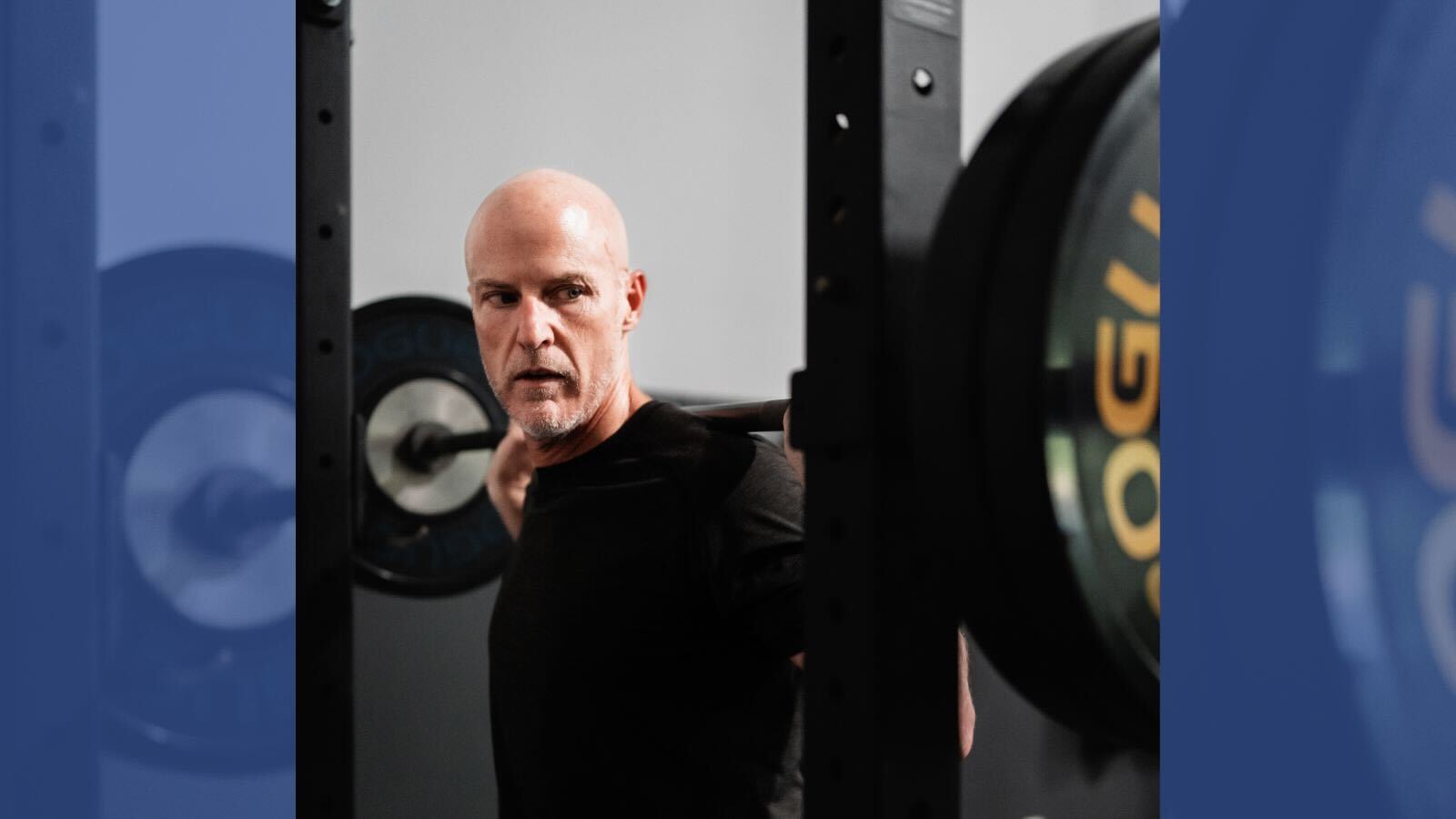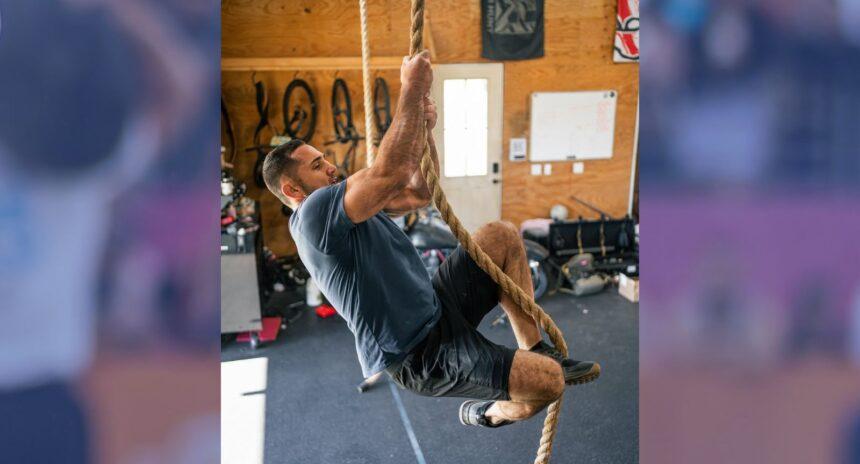
I wrote an op-ed for the Morning Chalk Up about 18 months ago, and it recently resurfaced because CrossFit finally brought back the slogan “Forging Elite Fitness.”
I’m glad to see it – affiliate owners have asked for this for years – but the timing raises a question: Why bring back what you paid to retire (since rebranding is expensive), and why now, on the eve of a potential sale?
Here’s what I wrote back in April 2024.
[Originally published on April 12, 2024, “Why is CrossFit Scared of ‘Forging Elite Fitness’?”]
I found CrossFit in 2012 in the middle of adversity.
Having gone through a sudden divorce a few years earlier, I found myself in the worst physical and mental condition of my life.
I didn’t know where to turn to fix my problems, but I knew I was sick and tired of feeling sick and tired. I decided to try P90X, and after 90 days reached what I thought at the time was the fittest I ever had been and ever would be.
I was so wrong.
One afternoon, while watching my youngest daughter at soccer practice, one of the dads asked me what I did to stay in shape. I initially assumed he was impressed with my peak physical prowess, but it turns out he was actually a member of a new cult called “CrossFit.”
I remember it like yesterday when he told me, “This will be the hardest thing you ever do” and I literally laughed at him.
A week later, I showed up at CrossFit Distinction in Beachwood, OH, a little hungover and definitely under-fueled. I quickly found myself holding my knees at the door in the middle of the introductory workout while the coach screamed from across the gym, “Don’t go home!!!”
I was hooked.
I had found what I was looking for, but I also knew that if I wanted to feel better, less tired, and fitter overall, I needed someone to push me out of my comfort zone, and this was it.
I was joining a community that enjoyed doing hard things, celebrated successes, and witnessed failures all under the common bond of shared suffering.
These were my people, a fun group, but they weren’t who I expected.
They were lawyers, doctors, moms, dads, young, old, and all from backgrounds so diverse from the outside looking in, you would never guess why were were all together.
Our common bond was building or “forging,” if you will, the best version of ourselves, or as CrossFit called it at the time, “Forging Elite Fitness.”
Fast forward over a decade, and CrossFit barely, if ever, uses the term “Forging Elite Fitness,” and I am scratching my head now trying to figure out why. I have theories as to why they are scared of it.
I think they are concerned about the connotation of the word “Elite” and fear it may limit their ability to reach a broader audience. The word itself is defined as someone who is superior in terms of ability or qualities to the rest of a group or society.
The press often refers to the top 1% of all earners as “elite,” so keeping that in mind, being elite often feels unreachable to someone like you or me.
I believe it is this public perception that is shaping the direction among CrossFit leadership in how they talk about and drive the business model.
There are currently [editor’s note: as of April 2024] around 2-3 million CrossFitters worldwide, and CrossFit leadership has a goal of increasing to 30 million CrossFitters by 2030, as laid out by both Don Faul and Jay DeCoons.
To hit this target, they need to close a gap of about 28 million memberships. To achieve this, they appear to have abandoned “Forging Elite Fitness” in order to reach a broader audience.
They’ve started using catchphrases like “Fitness that sticks,” “Workouts tailored to you”, and “Community-driven culture” to make it feel more accessible.
I respect reaching more people and would love to see the masses embrace what we all love, but none of these new catchphrases and slogans challenge you to be the best version of yourself or forge something new.
If anything, they lower the bar, which in turn dilutes the community-driven culture they are advertising and moves us farther away from our original mission of Forging Elite Fitness.
When I reflect on my decade-plus of CrossFit, I can attest that the culture has always been about being bold while challenging yourself to do hard things.
As the rest of the world lowered expectations around health and wellness, we raised them.
When we said “Forging Elite Fitness,” we weren’t talking about Games athletes. We were talking about forging elite parents and grandparents, elite doctors and lawyers, and elite athletes – from any walk of life – who chose to do this hard thing with us.
So, let’s bring back “Forging Elite Fitness” and tell the world that we can help each of them become a bold new version of themselves, just as CrossFit did for me over a decade ago.
I’d like to think my argument in that op-ed influenced the decision to bring back “Forging Elite Fitness.”
More likely, the motivation is financial.
When I wrote that piece, CrossFit was in a different place.
The last year and a half has been tough: my estimate shows the affiliate map now falls below 9,500 – about a one-third decrease since the 2020 purchase – wiping out much of the short-term financial gain from the affiliate fee increase.
In the context of a sale, CFHQ’s decision to drop the costly rebrand, while simultaneously losing over 5,000 affiliates, appears more like triage than vision.
It’s hard to sell a company with little collateral, and harder still when your historical growth engine – affiliate growth – has stalled.
A sudden “back to basics” pivot should give affiliate owners pause. This isn’t because the message is incorrect (it’s accurate), but rather because it implies that the leadership is either running out of innovative ideas or has become desperate enough to revert to the strategy they had previously attempted to dismantle.
My stance remains the same: “Forging Elite Fitness” is the top marketing framework for affiliates.
The remaining question is whether leadership genuinely plans to use it as a growth tool or if this is just a polite apology on the way out the door.


